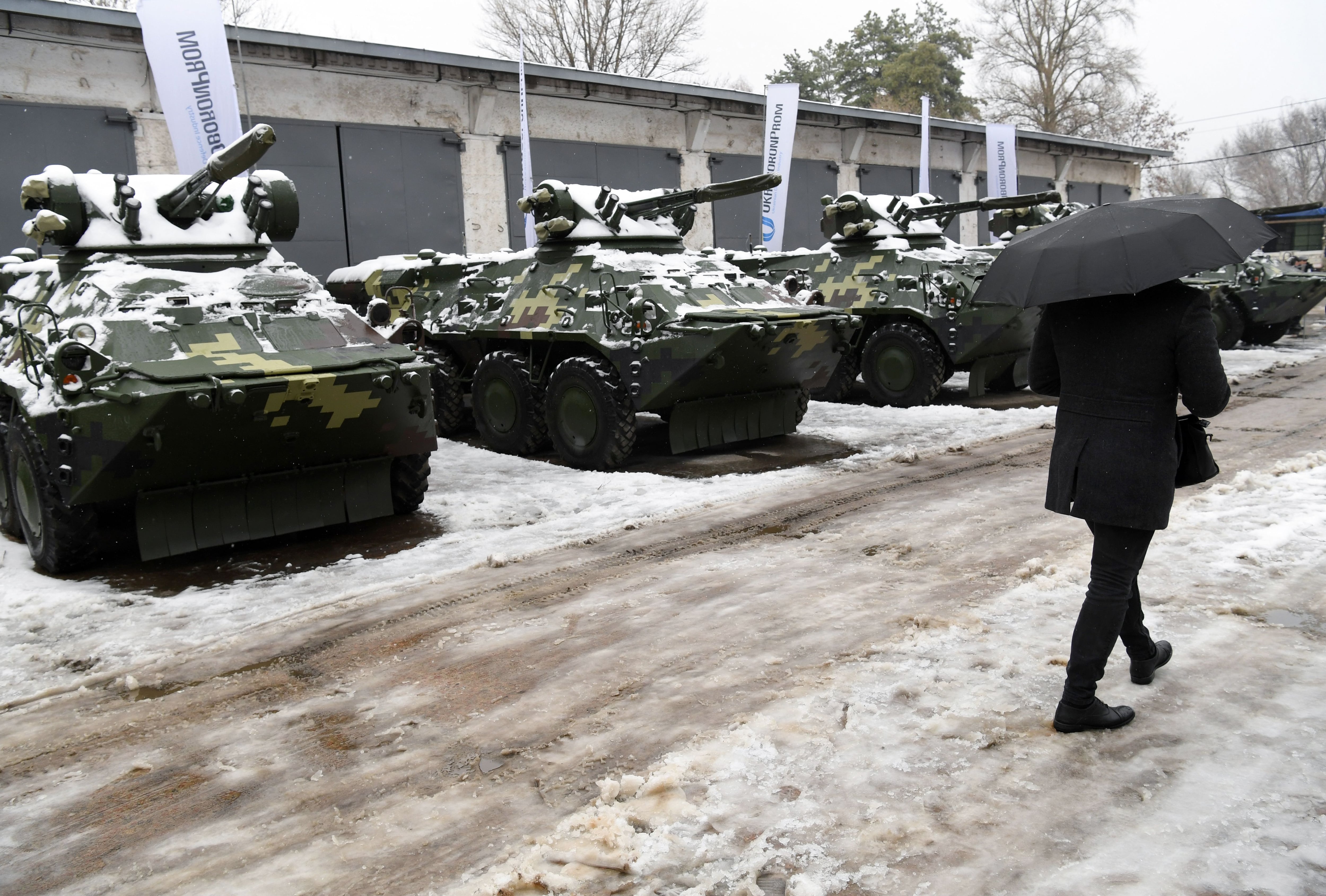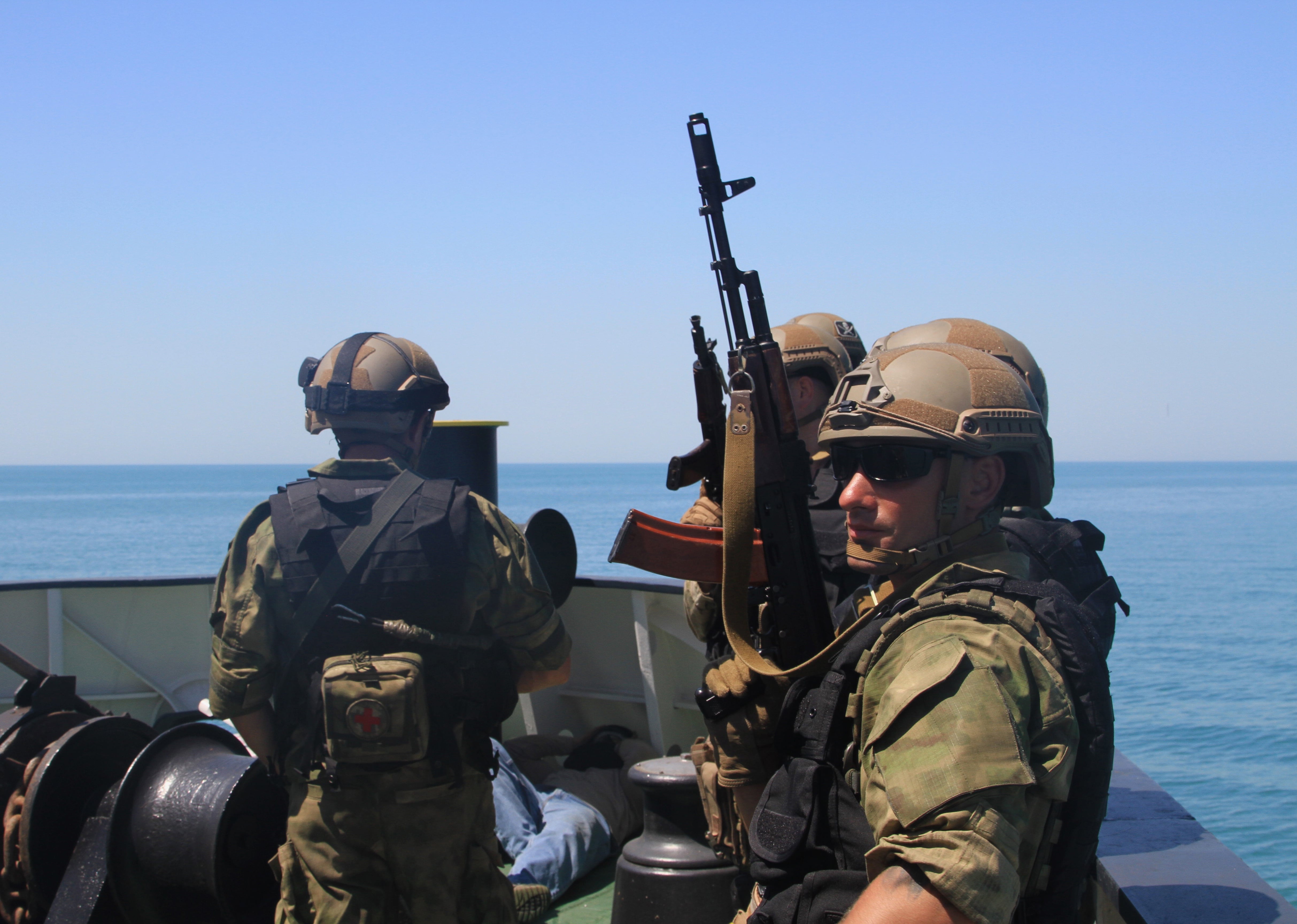WASHINGTON ― At the center of the latest scandal threatening to take down President Donald Trump is $391 million in military aid that the U.S. leader reportedly asked his staff to freeze for two months before dropping the hold a week ago, under pressure from lawmakers.
On Wednesday, Washington was consumed with a July 25 call between Trump and Ukraine’s new president, Volodymyr Zelenskiy. According to a memorandum of the call released by the White House, Zelenskiy asked to buy American-made Javelin anti-tank weapons, and Trump asked Zelenskiy to help him work with U.S. officials to investigate political rivals.
That call fueled a whistleblower’s complaint that has become central to the formal impeachment inquiry launched Tuesday by House Speaker Nancy Pelosi, but the call also highlights the vital role of U.S. military aid to Ukraine, which has lost 13,000 of its people since its conflict with Russia began in 2014.
Here’s what you need to know about the U.S. military aid to Ukraine.
$1.5 billion in security assistance
In June, the Pentagon announced plans to provide $250 million to Ukraine in security cooperation funds for additional training, equipment and advisory efforts to build the capacity of Ukraine’s armed forces. The U.S. State Department separately planned to provide $141 million in aid.
Broadly speaking, Democratic lawmakers see the president’s decision to temporarily hold both pots of money as divorced from policy and politically motivated, and a few Republican lawmakers have publicly expressed cautious concern. Trump’s allies say the president was troubled about corruption in Ukraine and leery of spending more to help Ukraine when compared to America’s European allies.
On Wednesday, Trump and Zelenskiy appeared together for a news conference, at which Trump said he wanted Germany, France and other European countries to contribute to Ukraine’s defense. Trump also diminished the substantial aid provided under the administration of President Barack Obama.
“We put up a lot of money. I gave you anti-tank busters that, frankly, President Obama was sending you pillows and sheets,” Trump said.
For his part, Zelenskiy thanked all of the countries working to help it end its war in eastern Ukraine.
The U.S. has committed more than $1.5 billion in security assistance to Ukraine since 2014, when Russian-backed separatists began driving tanks through eastern Ukraine. The latest equipment was largely more of the same aid the U.S. previously supplied, aimed at helping Ukraine monitor and secure its borders, deploy its forces more safely and effectively, and make progress toward NATO interoperability.
The Defense Department’s tranche was set to include sniper rifles, rocket-propelled grenade launchers, counter-artillery radars, electronic warfare detection and secure communications, night vision equipment, and military medical supplies and treatment. The department previously included counter-sniper equipment, Humvees and tactical drones as well.
The State Department funding included $115 million for a broad array of purposes, to buy American-produced weapons through the Foreign Military Financing program, but also to provide advisers and training to boost Ukraine’s NATO interoperability: English language labs, medical equipment and improvised bomb simulators. The funds could also pay for spare parts, sustainment and training for previously purchased U.S. gear.
RELATED

Battlefield benefits aside, the military assistance sends a powerful signal of American support, particularly when the U.S. is not obligated to defend it, as it would a NATO ally, said Mark Simakovsky, a senior fellow at the Atlantic Council. Simakovsky served as chief of staff in the Defense Department’s office focused on Europe and NATO during the Obama administration.
“As a political signal, there is no more important ally to Ukraine than the United States, and the United States’ aid dwarfs aid from other countries,” Simakovsky said.
Not only does withholding that assistance potentially send a signal to Russia that the U.S. is not as concerned about Russian occupation of Ukraine, but the suddenness, just months before the funds were set to expire, jarred lawmakers and administration officials.
“The sharpness and abruptness with which this was frozen surprised many in government, and I think now we are seeing why,” said Simakovsky, who’s convinced Trump was trying to exercise leverage over Zelenskiy for personal political gain.

Lethal aid and Donald Trump
One irony is that the Trump administration was going further with its aid than the Obama administration by deciding to provide Ukraine with lethal weapons. In 2017, Trump announced his intent to provide the Javelin, and Congress approved an assistance package of 210 missiles and 37 launchers, together worth $47 million.
“When Trump was elected, the first thing they did was send in the Javelin. It wasn’t exactly high-end, but we were very happy, and they built on a very firm foundation,” said Jim Townsend, who spent eight years as U.S. deputy assistant secretary of defense for European and NATO policy and is now with the Center for a New American Security think tank.
“Playing games with them now is nuts because we want to keep this trajectory upward.”
Co-manufactured by Raytheon and Lockheed Martin, the FGM-148 Javelin is a “fire-and-forget” anti-tank missile that uses infrared guidance to hit armored targets. It was not seen as a game changer in the fighting, but its delivery to Ukraine showcased both U.S. support and that Russian activity would not go unpunished.
“The Javelin is the best anti-armor system anywhere in the world. It goes out to 2 kilometers and it will destroy any armored vehicle, any tank,” said retired Lt. Gen. Ben Hodges, a former U.S. Army Europe commander. “It’s powerful and easy to use, so it was a powerful increase in Ukrainian capabilities.”
By the time the Javelins were provided, Russian armor had pulled back from the conflict in eastern Ukraine, which has stalemated into trench and bunker warfare. Just by keeping the fighting at a simmer, Russia is likely achieving its aim of preventing Ukraine’s integration with the West ― and it does not appear Russia is going to try an armored thrust to gain new ground.
Col. Andrii Ordynovych, Ukraine’s military attache in Washington, said that when Ukraine’s military began using U.S.-provided Javelin anti-tank weapons, Russian tanks and armored personnel carriers that once operated with devastating impunity had backed off.
“That was a strategic deterrence,” he said.
Military aid evolves
American lawmakers from the Democratic and Republican parties, at least as far back as 2015, have been urging the United States to help Ukraine with arms and other heavy military equipment to defend itself against Russian-backed separatists.
Though aid from the U.S., Poland and NATO allies spiked after the invasion, the Obama administration worried in part that providing Ukraine with lethal aid would provoke Moscow into escalating an already volatile situation. The training and institutional reform efforts aimed to continue stamping out corruption and helping Ukraine become interoperable with NATO. (Ukraine is not a member of NATO.)
“Javelins were considered a step up, and the concern was what the Russians were going to step up on their end,” Townsend said. “It wasn’t that there was a lot of tree hugging [in the Obama administration], it was to go up a notch if they go up a notch.”
Some of the early nonlethal aid was useful. After Ukraine received 20 Lockheed Martin AN/TPQ-53 radar systems that track incoming mortar and short-range artillery fire in 2015, the casualty rate for units equipped with those system went from 47 percent to about 18 percent, Ordynovych said.
“That was some of the most useful equipment that we ever provided them because it provided them early warning,” Hodges said. “The Ukrainians used [the radar] so much, they were under so much rocket and mortar fire, that they became extremely proficient. So we learned from them.”
Congress has since expanded the categories of available military aid. Its authorization for the Ukraine Security Assistance Initiative for 2016 included anti-armor weapon systems, mortars, crew-served weapons and ammunition, grenade launchers and ammunition, and small arms and ammunition ― but also unspecified “cyber” and “electronic warfare” capabilities.
RELATED

In response to tension in the Azov Sea in 2017, Congress added the categories of air defense and coastal defense radars; naval mine and counter-mine capabilities; and littoral-zone and coastal defense vessels. (That tension peaked in November 2018 when the Russian Coast Guard fired on and captured three Ukrainian Navy vessels, along with 24 crew members, sailing through the contested Kerch Strait.)
Of the recent State Department tranche, $16.5 million was for equipment training to counter waterborne threats, as well as training Russian surface, subsurface and long-range aircraft, according to a recent notice to Congress. The money could also pay for advisers, parts and training to build electronic signals intelligence, naval special warfare capabilities, and anti-submarine warfare capabilities to include towed-array sonars, lightweight torpedoes and sonobuoys.
Ukraine’s State Border Guard Service would be eligible for support to maritime rapid response units through the provision of small boats, communication, safety equipment and training simulators.
To be clear, Ukraine has a robust military and defense-industrial base on its own, and according to Simakovsky, Kyiv is likely looking less for small arms than for larger and more sophisticated training, as well as maritime capabilities, intelligence and cyber support.
The “full spectrum” of Russian military doctrine has been on display. That doctrine includes the use of conventional forces like mechanized infantry backed by armor and artillery, special operations forces, assassination and bombings, electronic warfare, cyberattacks, and the weaponization of information. It is a combination of efforts often referred to as “hybrid warfare.”
The U.S. military is paying close attention to how Ukraine fights the Russians, the deputy assistant secretary in the European and Eurasian Bureau at the U.S. Department of State, George Kent, told Military Times in July.
“I think there is a great opportunity, even as we are helping the Ukrainian military build its own resilience against Russian aggression, for us to learn from the modern way of Russia doing war in Ukraine,” he said.
Things have changed since Russia invaded Georgia in 2008, said Kent, and what American forces are learning in Ukraine has been applied to places like Syria.
“The U.S. military is paying very close attention to how the Russians fight in Ukraine and the equipment and tactics and techniques they are employing,” Kent said.
Joe Gould was the senior Pentagon reporter for Defense News, covering the intersection of national security policy, politics and the defense industry. He had previously served as Congress reporter.
Howard Altman is an award-winning editor and reporter who was previously the military reporter for the Tampa Bay Times and before that the Tampa Tribune, where he covered USCENTCOM, USSOCOM and SOF writ large among many other topics.








